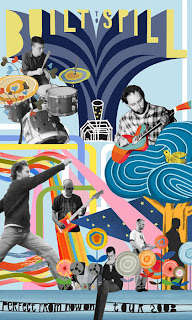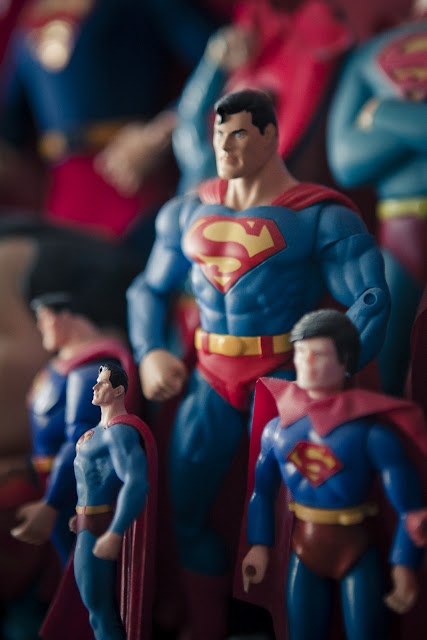NOTE: This excerpt is from the chapter dealing with my time working for Warner Bros. Records in 1996-99, first in the Alternative Marketing Dept., then another, kinda pointless job when altmktg was eliminated in 1998.
The transition was… weird. I had gone from running a tiny independent record store straight to working for one of the biggest record labels in the entire world. And while I never harbored the kind of anti-major bias that so many punk rock fans exhibited, I still felt the need to christen my new autobiographical comic strip for DIRT with the self-deprecating title, MAJOR LABEL SCUM!
Obviously, I was still feeling my way around the company. While my cohorts in alternative marketing accepted me, some of the people I had to deal with in the rest of the company weren’t completely convinced I was qualified for the job.
And, in fact, in lots of ways… I wasn’t. Sure, I was able to relate to the small record stores and I knew what kinds of marketing worked and what didn’t and I had ideas and I could even do my own flyers and promotional mailings. And certainly, I was passionate about music. But I had no grasp of the stakes at play on a major label level. I wasn’t ready for the egos and the personality clashes. And maybe not so surprisingly, it turns out that when you work for a giant entertainment conglomerate, passion for what you’re selling is not only not a prerequisite, it’s not even the norm. I learned this quickly and painfully.
Part of my job was to accompany Dale, the regional sales manager for Warner / Reprise in my territory, to monthly meetings at the WEA branches where we would talk to the sales people about our upcoming releases, play them music, show them videos, discuss marketing plans, etc. Dale handled most of the material, while I would talk about the priorities for my department. At my very first meeting, I brought along a new video for the single, “Sugar Water” by the band Cibo Matto. The video, directed by Michael Gondry, was a split screen of Cibo’s two members with the action on the left side moving forwards, the right side moving backwards. At the midpoint of the video, the two literally crash into each other and the story continues to unfold with the two girls switching sides. It was a really cool video and I was excited to show it to the people who were responsible for conveying that enthusiasm to the buyers at every major record store in New York City and its environs.
About thirty seconds in, the video was shut off and we were told to move on to the next thing. “But… you didn’t get to the cool part where…” I started to stammer, but was stopped by Dale, who let me know that there’s not enough time to really get into everything, especially records by bands who hadn’t gone gold. The next hour was a rude awakening, as I watched a roomful of mostly bored men (and a few equally bored women) sit and bob their heads mindlessly to whatever snippet of a song was played, acting like they loved what they were hearing when they probably weren’t even listening. I dubbed these guys “woodpeckers,” and they would become part of a faculty that taught me a hard lesson about the music business.
The sad fact is that a large percentage of people who get into the music business don’t care about the former part of that term so much as the latter. They majored in marketing or business in college and just so happened to fall into a job selling records. But in reality, most of them may as well be selling shoes. And it wasn’t just the sales guys. Radio promoters rarely listened to full albums, they only knew the singles they were pushing on programmers. My little corner of the company was either ignored or held in outright disdain by many—not all—people at the label.
There were some people who appreciated our mission, mostly A&R people (who signed the bands) and the risibly-titled “product managers” (who oversaw the production and release of the records). They dealt with the new and developing bands and appreciated having someone in marketing whose sole focus was their records. The first time I met Joe, the head of A&R, he handed me a cassette advance of the debut WB album by a band he had signed, saying, “This is the future.”
The album was Built to Spill’s PERFECT FROM NOW ON, and while it may not have signaled the beginning of a new musical era, it was a fucking awesome record. Built to Spill was a well-established indie band from Idaho who signed a contract with Warner that not only allowed them a huge amount of creative freedom, it also got the band members and their families health insurance! Joe was old-school WB, an A&R guy who signed what he thought was great music he wanted to break (as opposed to signing music that fit the current hit mold). Joe appreciated the work of the alt-mktg dept. and we all loved working that band; Records like PFNO were why we were in the music business, at least.
There were other perks, though. In February of 1997, I found myself attending two events that almost blew the mental circuits of this pop culture sponge. I attended the premiere and the star-studded VIP after-party at Madison Square Garden for Howard Stern’s film, PRIVATE PARTS. I was never a big Howard Stern fan, so being in the same space as Stuttering John and Robin Quivers wasn’t a big deal to me, but everywhere I turned, there was another famous person. Tom Arnold had toilet paper stuck to his shoe. Joan Rivers looked tiny and plastic. I pretended that Jeremy Piven and I were old high school buddies, causing him some discomfort until I broke the façade. “I play guys like you!,” he said to me, which I don’t think was a compliment (and this was years before ENTOURAGE).
The PRIVATE PARTS premiere occurred just one day after I went to the Warner / Elektra / Atlantic post-Grammy party at the enormous Park Avenue Armory in New York City. There may not have been quite as many celebrities at the Grammy party, but there were plenty.
Two events from that night stand out in my mind. The first was meeting Elvis Costello, whom I’d loved since I discovered him in 1979. Granted, I (like 99.9% of Elvis’ fans) preferred his earlier Columbia records to the work he’d done since he moved to Warner Bros. in 1989, but he remained one of my all-time favorite artists. I worked up my nerve and introduced myself to him as a new WB employee, proud and anxious to be part of his team when his next record came out. Elvis was very polite, said thank you, shook my hand and went about his business.
I immediately and excitedly ran to tell Jim about my encounter with Mr. Costello. My boss, however, had an interesting little tidbit of information that I might have liked to know five minutes earlier. “You know, he just left the label, right?”
As I stuck my tail between my legs and slunk back to our large table, I noted that the actress Rosanna Arquette was seated there, and made mention to another company drone. “Hey, there’s Rosanna Arquette,” I said. “Yeah…,” said my friend. “Yeah, she’s right there!,” I pointed, missing another big picture. “Yeah, and….” Said my friend. “What?” I asked, giving another glance towards the gathered chairs and only then noticing who was sitting next to Rosanna. “Oh. And Madonna.”
In my time at Warner, I was in a room with Madonna twice. Let me explain what it's like to be in a room with Madonna. It's fucking weird to be in a room with Madonna.
Even before I worked at Warner, I’d met my share of celebrities, mostly of the musical persuasion, although I’d waited on Harrison Ford at Sam Goody in 1984 when he was in Lancaster to film the movie, WITNESS. But there’s something about being around Madonna that’s just… fucking weird. She is one of those five or six celebrities in the world who transcend normal human existence and just suck the oxygen from the room. You stand transfixed, like an alien has just materialized in front of you and you can only stare and hope that you won’t be selected for some kind of painful experiment.
I did not bother trying to introduce myself to Madonna.
Then again, I was never a huge Madonna fan. Talking Heads, on the other hand, were one of my favorite new wave bands of the ‘70s-‘80s. Frontman David Byrne’s world music label Luaka Bop was one of our affiliated labels, and bands like Geggy Tah, Cornershop and Zap Mama were usually priorities for alternative marketing, due to our relationships with small stores that might give this very non-mainstream stuff a push and because the label had low expectations for breakthrough success on most of the acts.
Luaka Bop was run out of David Byrne’s west village brownstone, which meant that when we’d go there for marketing meetings, we were hanging out in David Byrne’s house. As much as I usually tried to be nonplussed by rock stars, this was a bit overwhelming. I’d sit there and try to pay attention, which was hard for numerous reasons. First, I have to admit that I never gave a crap about world music, so, like the woodpeckers at WEA, I was feigning enthusiasm for most of the Luaka releases. But my distraction was primarily due to how much I was geeking out, soaking up the ambience and searching for pop culture iconography on a bookshelf or mantle.
I found it, big time, at a party David Byrne threw during the CMJ Music Marathon in 1997. My entire department and some other folks from the label were hanging out in the downstairs office and patio area, when my pal Yvette (who worked in the advertising department) walked between two ceiling-high shelves full of boxes, books and records and gasped, “Oh my God!” I glanced around the corner and asked what she’d seen. She pointed to an enormous white box on the top shelf and reiterated what was scrawled on the side in black marker: “The Big Suit!”
You don’t even have to be a big Talking Heads fan to know that she was referring to the iconic oversized white suit worn by Byrne onstage in Jonathan Demme’s 1984 concert film, STOP MAKING SENSE. Yvette and I looked at each other, silently contemplating whether it would be worth getting fired to take it out of the box and try it on. In those pre-cell phone days, nobody had a camera, so we decided to let it lie, but if technology would’ve been different back then, who knows…
_________________________________________________________________
from the forthcoming book, COLLECTOR'S EDITION: Confessions of a Pop Culture Obsessive-Compulsive by and ©Karl Heitmueller Jr.
Thursday, June 28, 2012
Monday, June 25, 2012
Action Figure Gallery by Gary Ashley
For a few days after Memorial Day, my pal and NJ expat, photographer Gary Ashley stayed at our apartment. During this time, he decided to ply his considerable skills on my wall of action figure shelving, making the geeky display look like a work of art (albeit a dusty work of art... damn!). Regardless of whether or not you've ever sliced a plastic superhero out of a clamshell case, these are some damn nice photos. After you're done here, go to Gary's site for more goodness.
Subscribe to:
Comments (Atom)



































